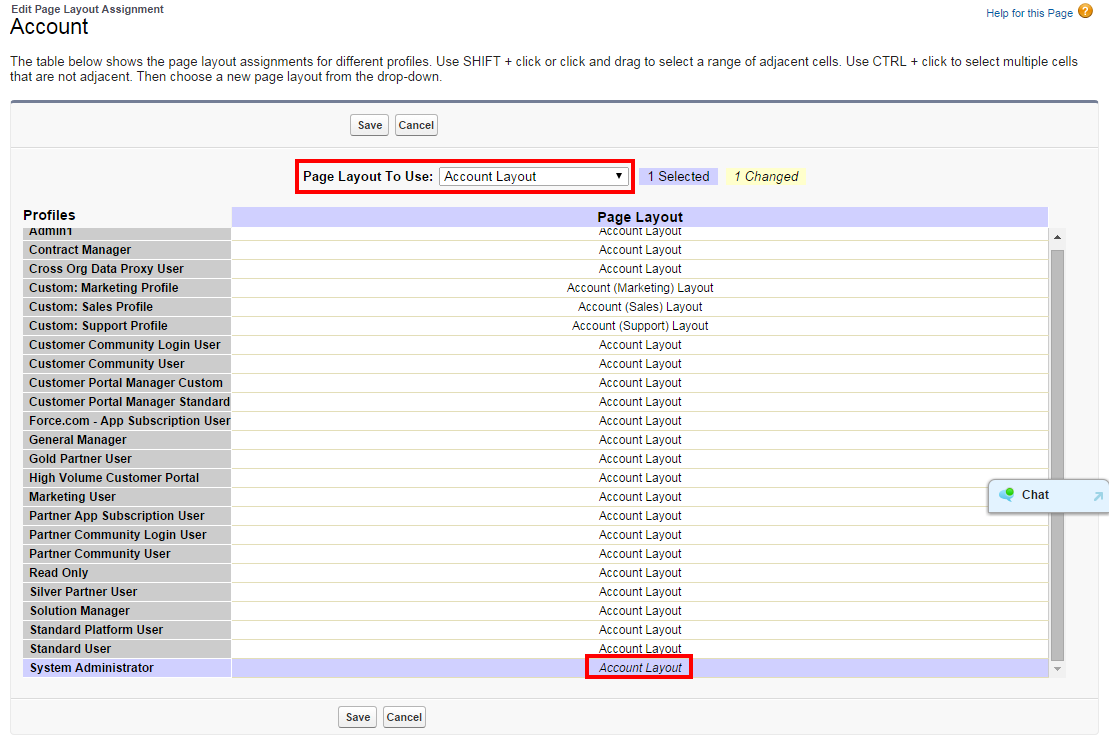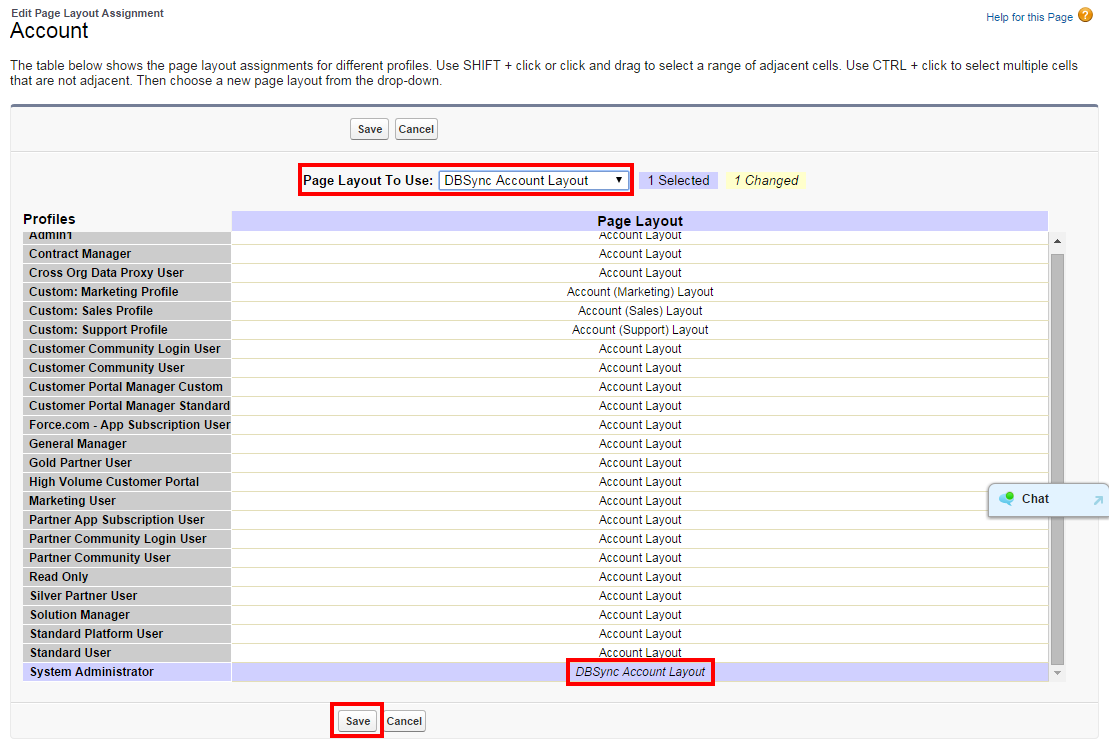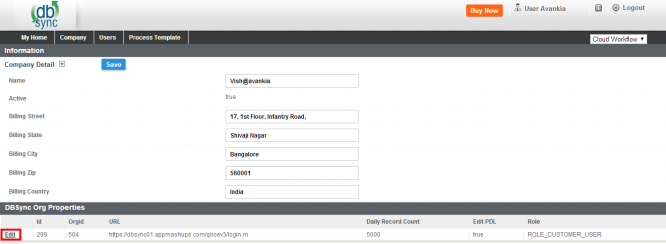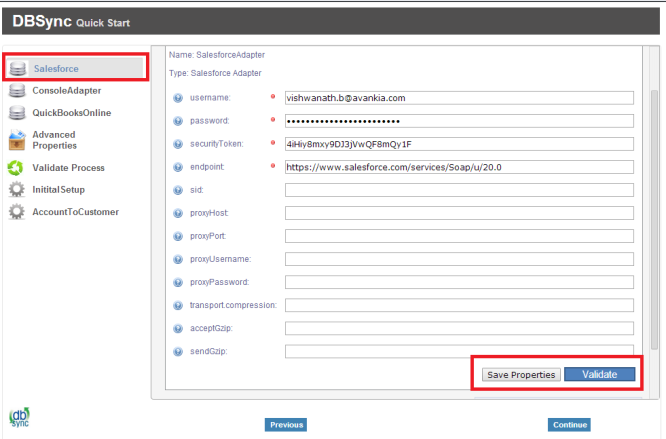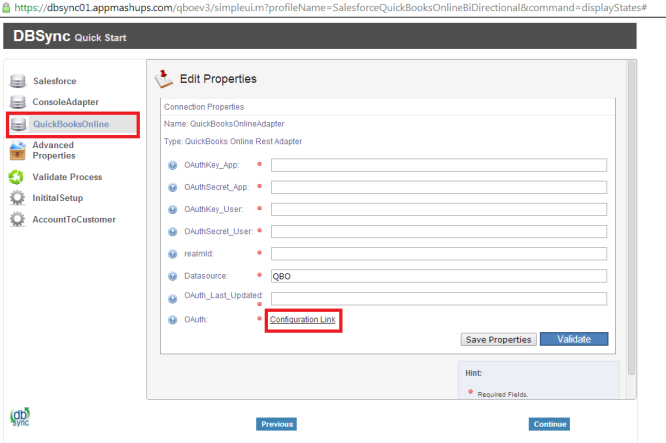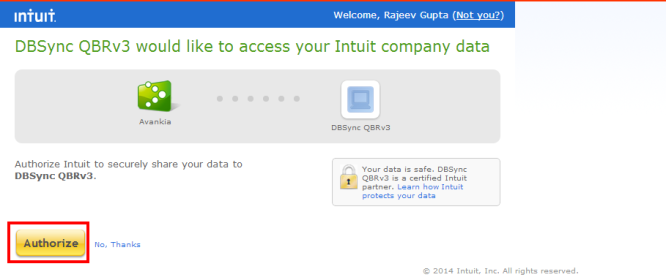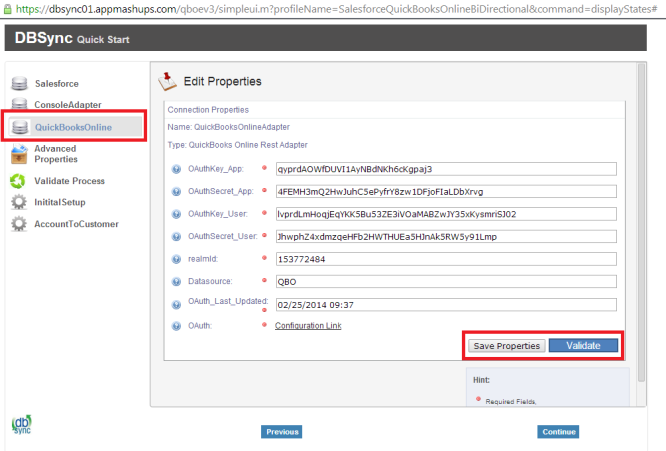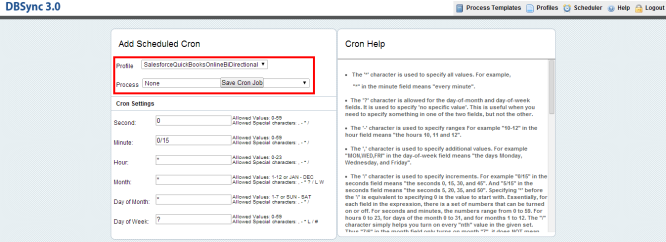2022
Overview
Data Flow
Process Map
Pre-requisites for Integration
DBSync package (QuickBooks Integration) Installation in Salesforce
DBSync Profile Setup
Running the Integration
Overview
DBSync for Salesforce & QuickBooks Online Integration is an easy to use application to integrate Salesforce Accounts / Contacts, Products, Opportunity with QuickBooks Online Customers, Items, Invoice, Sales Receipt & Credit Memo. This is also useful to migrate historical QuickBooks Online data into Salesforce or vice versa.
DBSync provides Bi-directional sync with pre-built field to field map along with flexibility for more complex and dynamic mapping capability. DBSync also has an automatic online update, enabling DBSync customers to enjoy all the product updates and features with every new release.
Data Flow
Data flow of Bi-directional integration between Salesforce & QuickBooks Online is shown in the below table.
Process Map
Process Map of Bi-directional integration between Salesforce & QuickBooks Online is shown in the below image.
Pre-requisites for Integration
- Integration of Salesforce to QBOE transaction is invoked provided the Generate field in Salesforce Opportunity is selected with the required transaction.
- It is mandatory that SF Opportunity (to be integrated with QBOE Invoice) is associated with the respective SF Account & also should have Products with Standard Price Book attached to it for DBSync to invoke integration.
DBSync package (QuickBooks Integration) Installation in Salesforce
- Get the following App from AppExchange for your Salesforce instance.
https://login.salesforce.com/packaging/installPackage.apexp?p0=04t600000001jUf
- Note: If you are installing into a sandbox organization you must replace the initial portion of the URL with http://test.salesforce.com
- It asks for username and password of the Salesforce instance where you would like to install DBSync. The username and password should have the administrative privileges to install.
- You will see Package Installation Details of DBSync Package DBSync: QuickBooks Integration (version 1.2) along with Package Component. Click on Continue to proceed with installation. Follow the instructions to Approve Package API Access, Choose Security Level and complete the process of installation.
- Now DBSync Page Layouts should be assigned for objects Accounts, Contacts, Opportunity, Opportunity Products and Products. Following steps can be referred to assign DBSync Page layout to Accounts Object. Existing Page Layout will be replaced by DBSync Page Layout. Any custom fields available in the existing page layout should be moved to DBSync Page Layout if required.
- Go to Salesforce Setup > Customize > Accounts > Page Layouts. This will show the list of available Page Layouts for Accounts Object. Click on Page Layout Assignment.
- You will find the list of default Page Layouts assigned for every Salesforce Profile. Click on Edit Assignment to proceed.
- Click on the Page Layout next to the required profile. Account Layout is the existing page layout for profile System Administrator and System Administrator is the profile that should be assigned with DBSync page layout. In this case Account Layout should be selected next to System Administrator.
- Select DBSync Account Layout from Page Layout To Use picklist. Page Layout will be changed from Account Layout to DBSync Account Layout. Click on Save to save the new page layout assignment.
- Similarly assign DBSync Page Layout for Salesforce Objects Contacts, Opportunity, Opportunity Products and Products.
DBSync Profile Setup
- Go to www.mydbsync.com & register for Free Trial. Ensure that Source & Target Adapters are Salesforce & QuickBooks Online respectively.
- Login using to dbsync account, go to Company tab, click on edit to view DBSync Org Properties. Click on edit and replace the existing URL with https://dbsync01.appmashups.com/qboev3/login.m
- Go to Process Template tab in DBSync home page and click on SalesforceQuickBooksOnline:BiDirectional to include process template for Bi-directional Integration of Salesforce & QuickBooks Online.
- Click on Launch in My Home tab, you will see SalesforceQuickBooksOnline:BiDirectional profile in the next tab of your browser.
- Click on Quick Start to configure Salesforce & QuickBooks Adapters
Configure Salesforce Adapter
- Enter Salesforce Username, Password & Security Token. Click on Save Properties to save the settings. Click on Validate to confirm the Salesforce connections settings are valid.
Configure QuickBooks Online Adapter
- Go to QuickBooks Online Connection properties, click on Configuration link, which will take you to new tab to authorize Intuit to securely share your data to DBSync QBRv3.
- Click on Authorize to continue. Confirmation email will be displayed as "Your QuickBooks Online is now connected with the Profile. Please close this window now".
- Go to DBSync Quick Start, all the QuickBooks Online Adapter Connection properties fields will be auto populated. Click on Save Properties of to save the settings. Click on Validate to confirm the QuickBooks Online connections settings are valid.
Running the Integration
DBSync Integration of Salesforce & QuickBooks Online can be initiated by the following three methods.
- Using Salesforce custom buttons
- Using DBSync Scheduler
Using Salesforce custom buttons
- Salesforce custom buttons in Salesforce Accounts, Contacts and Opportunity can be used to update these specific records into QuickBooks as and when required. To set Auto run of integration, one of the next methods should be used.
- Salesforce Custom Button Update Account to QBOE in Accounts Object is shown below.
- Salesforce Custom Button Update Contact to QBOE in Contacts Object is shown below.
- Salesforce Custom Button Update Opportunity to QBOE and Update Invoice from QBOE in Opportunities Object is shown below.
Using DBSync Scheduler
- Scheduler available in DBSync Account can be used to schedule the integration.
- Login to DBSync account, click on Launch to go to DBSync profile page and click on Scheduler on the top right corner.
- Select the integration profile and required process to auto run. Edit the Cron Settings to set the frequency of Auto run and Save Cron Job.




